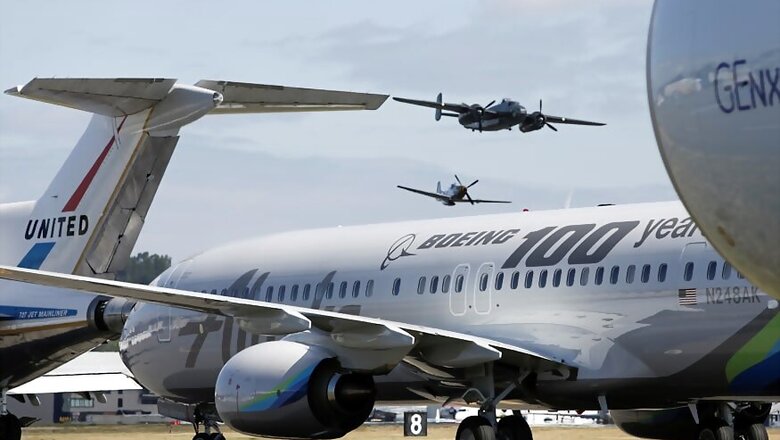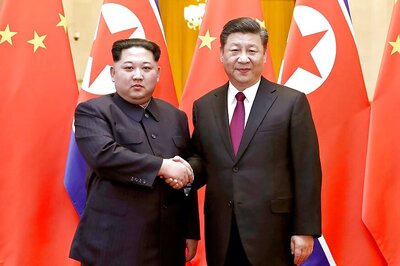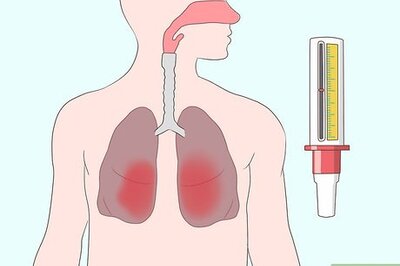
views
New York: A pioneer in commercial air travel and a major player in building military aircraft, Boeing's 100-year history coincides with many of the defining moments in US and global history.
1916: William Boeing starts the Pacific Aero Products Co., which was renamed after its founder a year later. Boeing's first planes, the Model C wooden seaplanes, were sold to the US Navy for World War I, establishing a key alliance with the US military.
1927: Boeing creates its own airline, Boeing Air Transport, for transporting mail with its Model 40 biplanes. The model would become the first Boeing airplane to carry passengers.
1934: Boeing, accused of monopolistic practices, is forced to break up into three entities: United Technologies, United Airlines and Boeing. Founder William Boeing divests his holdings in the company.
1937: Boeing delivers the first B-17s to the US Army Air Corps, the giant "Flying Fortress" bomber that played a central role in the Allied victory in World War II.
1941: The British Royal Air Force takes delivery of B-17s, giving them their first taste of combat.
1954: The massive jet-powered B-52 Stratofortress becomes the US military's symbol of power in the Cold War, to hold a key place in the US Air Force up through today.
1958: Pan Am, the leading US airline, unveils the Boeing 707, which soon became the first commercially successful jet airliner. Television ads showed well-heeled passengers sipping red wine and enjoying vibration-free travel, a sign of the post-war US economic boom.
1962: Boeing introduces the CH-47 Chinook helicopter, used in troop movement and battlefield resupply prominently in the Vietnam War.
1969: The Boeing-built Saturn V rocket propels astronaut Neil Armstrong to the moon.
1970: The 400 passenger 747 Jumbo Jet, more than twice as large as the 707, is launched to dominate international air travel and cargo over the next decades.
1970: Boeing archrival Airbus is created originally as a joint effort of the German and French governments.
1977: Two 747s collide on the runway of the Canary Islands, killing 583 passengers in the deadliest plane crash in history. The accident sparked sweeping upgrades to international safety regulations.
1987: Boeing is added to the Dow Jones Industrial Average, the prestigious index of blue chip companies.
1997: Boeing acquires American archrival McDonnell Douglas for $13.3 billion, slimming the field of major commercial aircraft makers to just two, Boeing and Airbus, and beefing up its capacity as an international weapons maker.
2001: Boeing picks Chicago as its new corporate headquarters after the midwestern city offers up some $60 million in tax incentives to move from Seattle, the company's production base.
2011: After numerous delays, Boeing's newest passenger jet, the widebody Dreamliner, completes its first commercial flight from Narita, Japan to Hong Kong. The planes, known for fuel efficiency, were later grounded due to an overheating problem with the lithium-ion batteries.


















Comments
0 comment